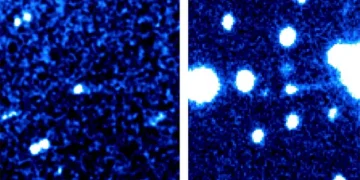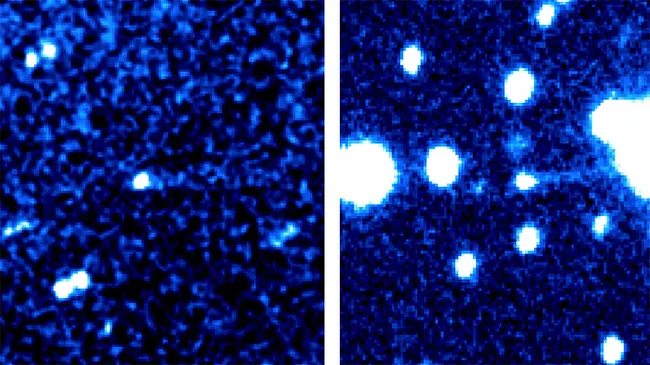a rare hybrid comet hiding in the asteroid belt has amazed astronomers with its blending characteristics of both comets and asteroids.
Discovering 456P/PANSTARRS: A New Main-Belt Comet
The identification of 456P/PANSTARRS began with the Pan-STARRS observatories in Hawaii, which spotted its comet-like activity in 2021. The object showed a faint, dusty tail, sparking questions about its true nature. More recently, observations using advanced telescopes, including the Walter Baade Magellan Telescope in Chile and the Lowell Discovery Telescope in Arizona, confirmed its recurring activity. This behavior cemented its classification as a main-belt comet.
Main-belt comets are a subset of “active asteroids,” bodies in the asteroid belt that exhibit outgassing—a process where ice beneath the surface sublimates into gas when heated by the Sun. Unlike traditional comets with long, elliptical orbits, main-belt comets follow circular asteroid-like paths, making them harder to distinguish without advanced observation techniques.
What Makes 456P/PANSTARRS Special?
The unique behavior of 456P/PANSTARRS offers a rare glimpse into the dynamics of icy bodies in the asteroid belt. When closer to the Sun, the heat causes water and carbon dioxide ices beneath its surface to vaporize, releasing gas and dust to form a faint tail. As the object moves farther from the Sun, this activity ceases, making it appear more asteroid-like.
Such recurring activity distinguishes it from ordinary asteroids, which may occasionally eject dust due to collisions but do not display sustained outgassing.
The Science of Main-Belt Comets
Main-belt comets challenge our understanding of where icy materials can exist in the solar system. Traditionally, the “snow line”—the boundary where ice could remain stable in the protoplanetary disk—was thought to lie far beyond the asteroid belt. However, the discovery of icy objects like 456P/PANSTARRS within the belt suggests the snow line was less rigid than previously believed.
Studies indicate that these objects formed in situ, meaning they originated in the asteroid belt rather than being transported from the outer solar system.
Implications for Solar System Formation
The presence of main-belt comets like 456P/PANSTARRS hints at a more complex and interconnected early solar system. If icy materials were widespread throughout the protoplanetary disk, it suggests that the conditions for water—and potentially life—were more common than previously thought.
This discovery also aligns with recent studies showing water-rich asteroids and icy materials in unexpected locations.
How 456P/PANSTARRS Was Identified
Identifying 456P/PANSTARRS required advanced observational techniques and years of monitoring. Initial observations showed a faint tail, a hallmark of cometary activity. However, the challenge was distinguishing whether this activity was a one-time event—possibly caused by a collision—or a recurring phenomenon.
Further observations confirmed that its activity reappeared as it approached the Sun, a behavior consistent with comets.
The Broader Impact of Main-Belt Comet Discoveries
Main-belt comets like 456P/PANSTARRS offer a unique opportunity to bridge the gap between asteroids and comets. By studying these objects, scientists can better understand the continuum of icy and rocky bodies in the solar system. This knowledge has implications not only for planetary science but also for astrobiology, as it sheds light on the distribution of water and organic materials—key ingredients for life.
Conclusion
The confirmation of 456P/PANSTARRS as a main-belt comet marks a significant milestone in our understanding of the solar system. This intriguing object, straddling the line between asteroid and comet, challenges traditional views of icy bodies and their distribution. Its discovery underscores the dynamic nature of the asteroid belt and provides a window into the conditions of the early solar system.
Reference:
Confirmation of Recurrent Activity of Main-Belt Comet 456P/PANSTARRS (P/2021 L4)



















